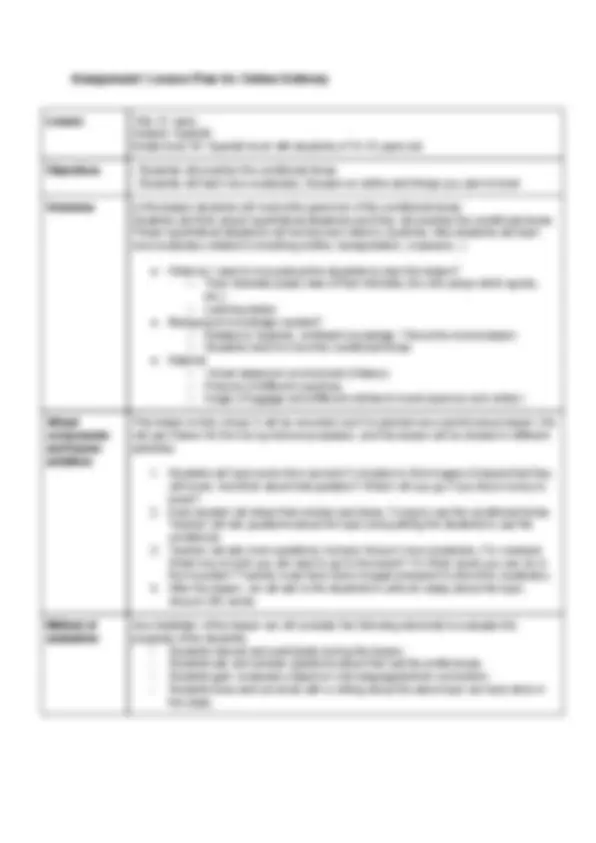
Assignment: Lesson Plan for Online Delivery
Title: Introduction to the verb “I like - Me gusta”
Subject: Spanish
Grade level: A1 Spanish level with students of 15-16 years old.
- Students will learn how to express like and dislike in Spanish.
- Students will be able to write basic simples sentences stating what they do or do not like.
- Students will learn new vocabulary, focused on new verbs.
In this lesson students will learn the basic grammar of the verb “Gustar” and how to use it.
We will listen a song as an introduction. Students will learn new vocabulary, related on the
free time and leisure activities, and how to use it.
● What do I need to know about the students to plan the lesson?
○ Their interests (basic idea of their interests, like who plays which sports,
etc.)
● Background knowledge needed?
○ Related to Spanish, very little. This is the start of a new theme.
○ Students need to be aware of activities they like and dislike.
● Material
○ Virtual classroom environment (Webex)
○ Me gustas tu (song)
○ Images, pictures of different leisure activities
○ PowerPoint slides with the grammar
Virtual
components
and lesson
activities
This lesson is fully virtual, it will be recorded, but it is planned as a synchronous lesson. We
will use Webex for the live synchronous session, and the lesson will be divided in four
different activities:
1. Students will listen to the song Mes gustas tu by Manu Chao, as an introduction.
They will see the video “Me gustas tu”. It will be a Youtube link with the lyrics of the
song. Students can try to guess how many times the singer says: me gustas tu. We
will ask to share the result after the listening.
2. Sharing a PowerPoint, teacher will explain the basic grammar: preference
expressions Me gusta + infinitive
and No me gusta + infinitive.
PowerPoint will
show the basic grammar and some pictures of leisure activity. For example: bailar
(dance), cantar (sing), dibujar (draw), caminar (hike), esquiar (sky), dormir (sleep),
leer (read), jugar (play).
3. Students will think about activities they like or dislike. We will work in small groups
to find and share images that represent activities that they like or dislike. And they
will share the results in the general conference.
4. As a conclusion, each student will write four sentences (two of things that they like
and two of what they do not like). Students will share those sentences in a
discussion forum.
As a facilitator of the lesson we will consider the following elements to evaluate the
progress of the students:
- Students recognize the unique phrases like “Me gusta...” in the song.
- Students interact and participate during the lesson.
- Students ask and answer questions about their activity preferences.
- Students gain vocabulary based on oral language/picture connection.
- Students present their sentences to the discussion forum.










